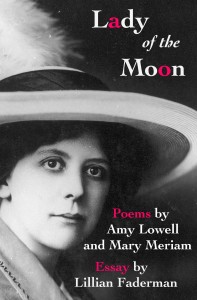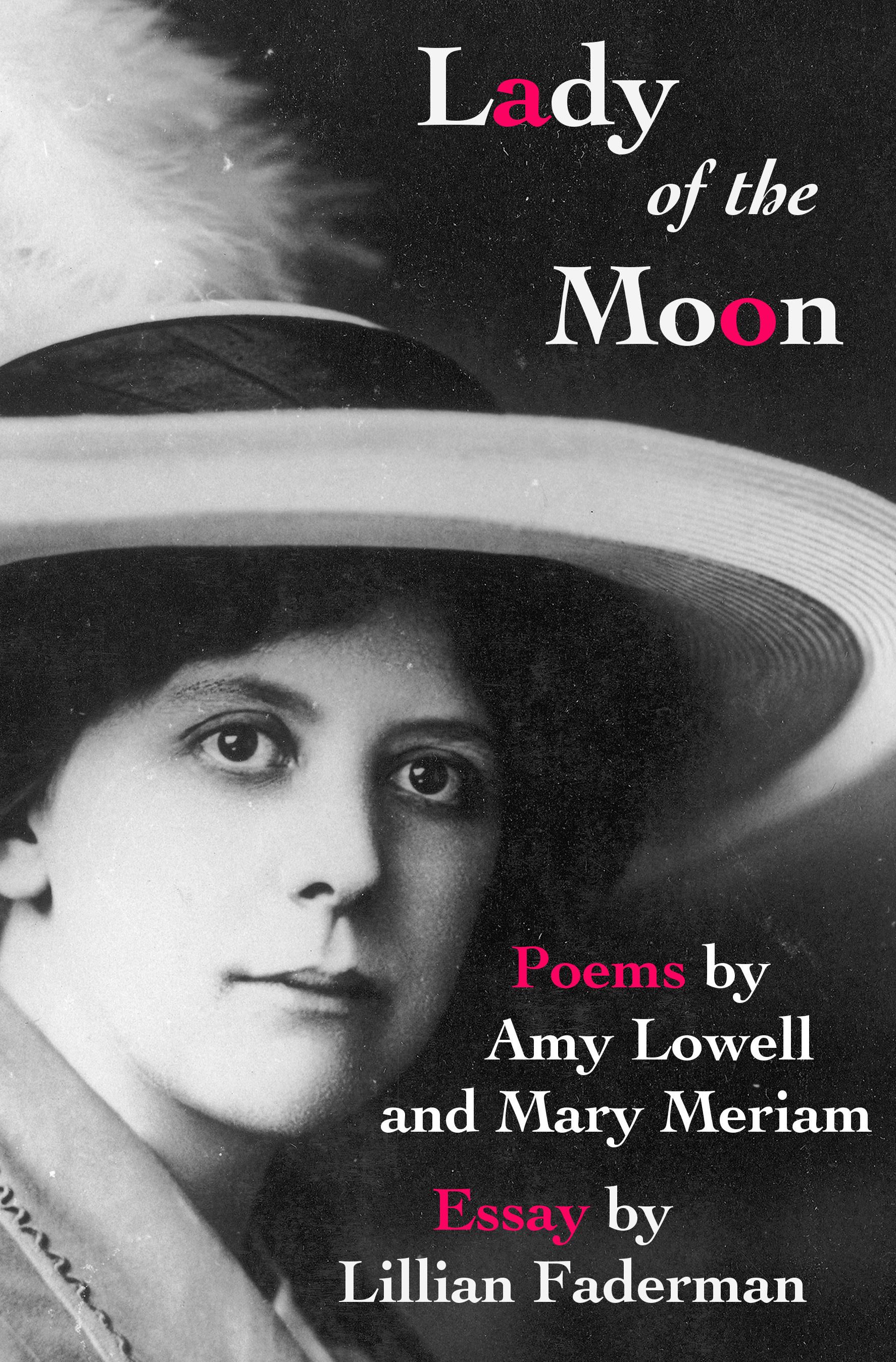 Lady of the Moon Poems by Amy Lowell and Mary Meriam
Lady of the Moon Poems by Amy Lowell and Mary Meriam
Essay by Lillian Faderman
Headmistress Press. 108 pages, $10.
THIS three-part literary portrait of the renowned poet Amy Lowell in light of her lesbian relationship with Ada Russell, her lifetime companion, lover, supporter, and muse—whom Lowell lovingly called “the lady of the moon”—breathes new life into Amy Lowell’s stature and significance. We first encounter a selection of Lowell’s love poetry to Russell, followed by a scholarly essay by Lillian Faderman that gives historical context to the intersection of Lowell’s work and her “outlaw” lesbian marriage. The volume concludes with a 27-sonnet sequence by Mary Meriam written in the voice of Amy Lowell, detailing the most significant moments in Amy and Ada’s relationship (the dedication uses their first names), a breathtaking testament to the book’s subject and her continuing inspiration.








Discussion1 Comment
Pingback: My Review of Lady of the Moon in GLR! | Siham Karami